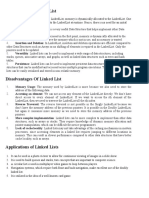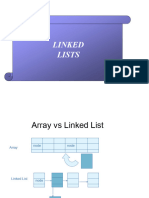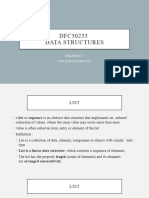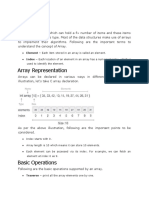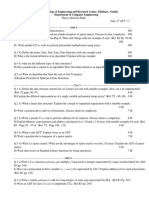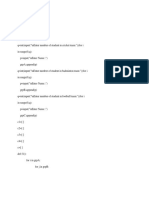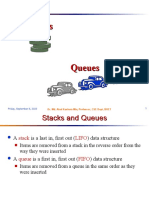0% found this document useful (0 votes)
18 views7 pagesDSA - Linked-List Classroom - Discussion Notes
The document discusses linked lists as a fundamental data structure for storing collections of elements, detailing their types such as singly, doubly, circular, and sorted linked lists. It explains how linked lists can be used to implement stacks and queues, emphasizing their dynamic memory allocation and efficient operations. Additionally, the document compares linked lists with arrays and dynamic arrays, highlighting their respective advantages and disadvantages in terms of memory management and performance.
Uploaded by
ransurmasumit11Copyright
© © All Rights Reserved
We take content rights seriously. If you suspect this is your content, claim it here.
Available Formats
Download as PDF, TXT or read online on Scribd
0% found this document useful (0 votes)
18 views7 pagesDSA - Linked-List Classroom - Discussion Notes
The document discusses linked lists as a fundamental data structure for storing collections of elements, detailing their types such as singly, doubly, circular, and sorted linked lists. It explains how linked lists can be used to implement stacks and queues, emphasizing their dynamic memory allocation and efficient operations. Additionally, the document compares linked lists with arrays and dynamic arrays, highlighting their respective advantages and disadvantages in terms of memory management and performance.
Uploaded by
ransurmasumit11Copyright
© © All Rights Reserved
We take content rights seriously. If you suspect this is your content, claim it here.
Available Formats
Download as PDF, TXT or read online on Scribd
/ 7






